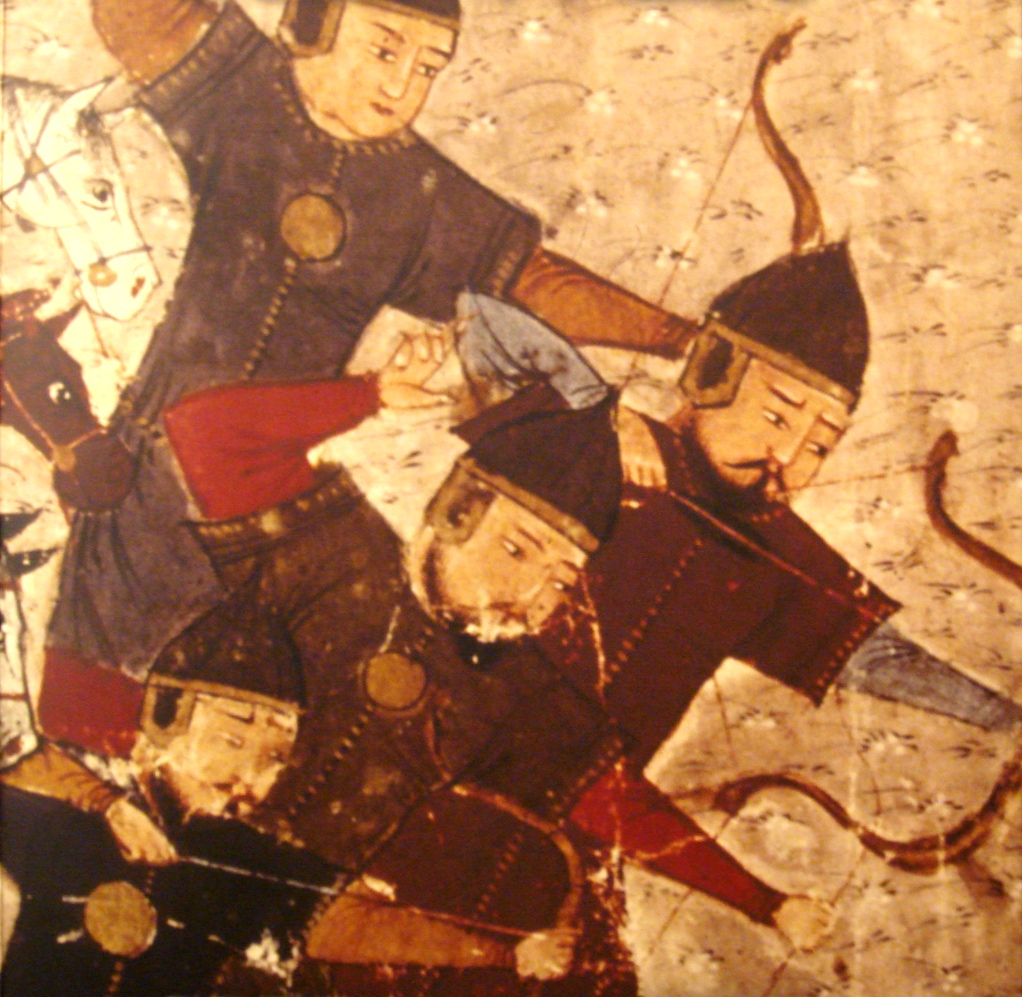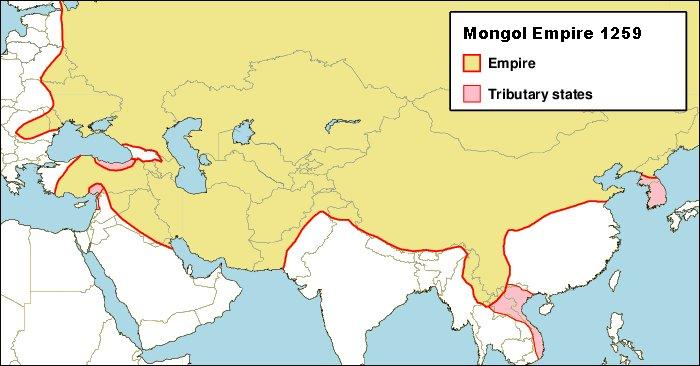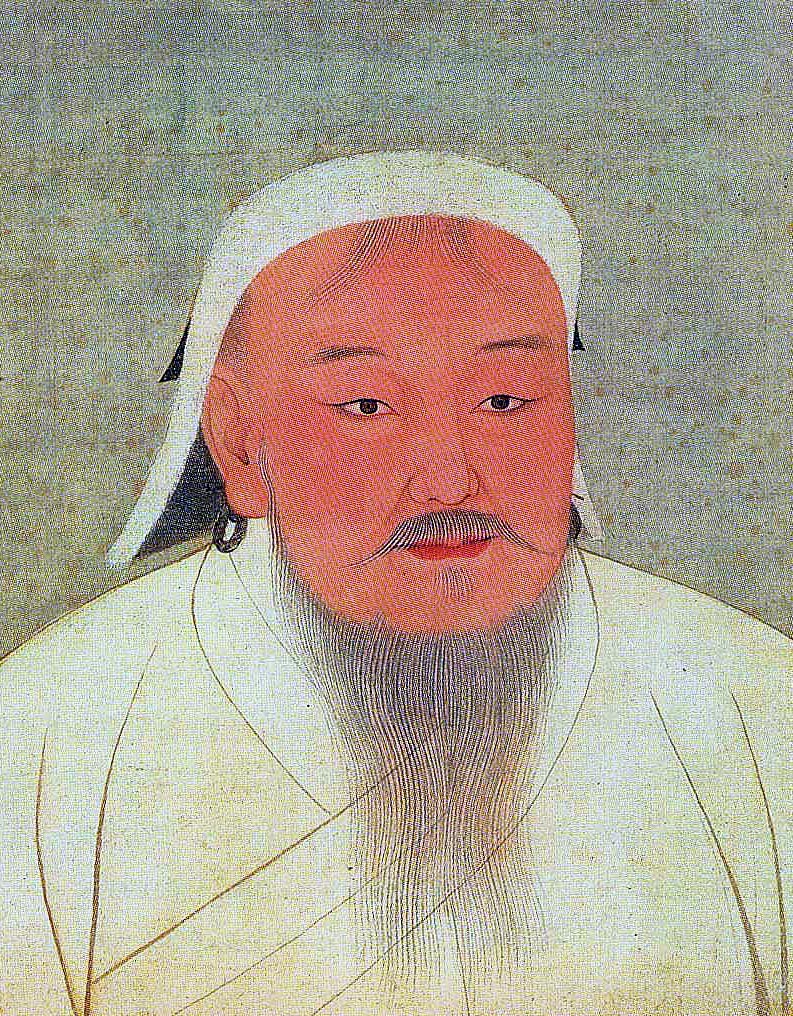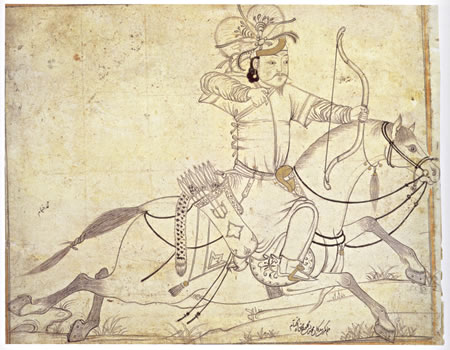The Mongols. The people who struck fear into the hearts of peoples who were unfortunate enough to have been in the path of their conquest. The people who at one point in history, was united by a man from a small clan and conquered the largest land empire humanity has ever known. The people whose mounted archers were undefeated in their time and for a long time after. While at one point they were all this, now the Mongols are not as well known. With this article I hope to provide you more with a knowledge of who the Mongols were and what the Mongol Empire was.

The Mongols are a Central Asian people who hail from the region we know as Mongolia, which is rather self-descriptive. The modern country Mongolia is bordered to the north by Russia and to the south by China. The Mongols lived a nomadic life on the steppes of Central Asia, moving between pastures following their livestock as they migrate according to the seasons. I use the word lived because most Mongolians today do not live a nomadic life, although around 30% of them still do or at least live a semi-nomadic life.
The Mongols are not the only nomadic people hailing from the vast steppes of Central Asia. There are many others including the Kazakhs and the Tuvans. Most of them, if not all, lived a similar lifestyle moving from pasture to pasture (this is known as pastoralism). However they are probably the best known by most of the world. This fact only became so due to their tremendous contribution to world history – the Mongol Empire.
The Mongol Empire existed from the 13th to 14th centuries and in that time span had the largest land empire the world has ever known. At its peak it stretched from Central Europe (Hungary, Poland, etc.) in the west to Korea and the Sea of Japan in the east. It also reached the Levant (Israel, Iraq, Jordan, etc.), Arabia, Iran, India, Indochina (today Vietnam, Cambodia and Laos) and northwards into Siberia. Imagine how vast an area that is and how diverse the hundreds if not thousands of peoples who lived there in the Mongol Empire at its peak.

The Mongols were divided into various tribes and clans that often fought with each other until a man whose name will forever be remembered united them, Genghis Khan. Genghis Khan actually means “Great Khan” and Khan is a word in various languages, including Mongolian, that means ruler or military leader. He was born as Temüjin, the son of Yesügei who was a prominent Kiyat chief in the Khamag Confederation, a tribal confederation of Mongols. Temüjin fought many other Mongol chiefs who sought to unite the other tribes under them but only Temüjin succeeded, leading to the Mongol Empire under him.

Temüjin and his descendants launched invasions in every direction, continuously expanding the Mongol Empire. Their military was probably the most organised of the time and undefeated. Their mounted archers dominated battles on fields especially against the rigid formations used by Medieval Europe at the time. In fact, their military was almost invincible with few defeats. Although their army wasn’t only composed of Mongols, as they conquered a territory and its people they enlist these people to join their army as well. The Mongols didn’t discriminate by race, ethnicity or religion, if you showed yourself skillful enough then you could join them.
The transcontinental empire connected the eastern world with the western world. It allowed ideas, technologies, trade and much more to spread. The aforementioned ideas, technologies, trade, etc. from the east spread to the west and vice versa. Although short (approximately one and a half century) it has certainly left its mark upon the world, sometimes in things we might not even realise.

Its armies were virtually invincible on the battlefield and their reputation preceded them, however the weakness of their empire lay in the challenge that Genghis Khan first faced: disunity. Soon the descendants of Genghis Khan fought amongst each other for power. These wars weakened and fractured the Mongol Empire. By 1368 the Mongol Empire ceased to be a united empire and instead fractured into four separate khanates or empires: the Golden Horde, the Chagatai Khanate, the Ilkhanate and the Yuan Khanate or dynasty.
And so the Mongol Empire came to its end. The largest land empire the world had ever soon did not survive longer than one and a half century owing to disunity and ambition. Even though fractured, they are still remembered and were still feared in their day. Their successor khanates would go on to make more history on their own and the legend of the Mongols would live on. Certainly the greatest legacy the Mongol Empire is how they managed to bridge the east and the west and with it among other things different ideas and technologies.
Thank you for reading my post and happy new year!